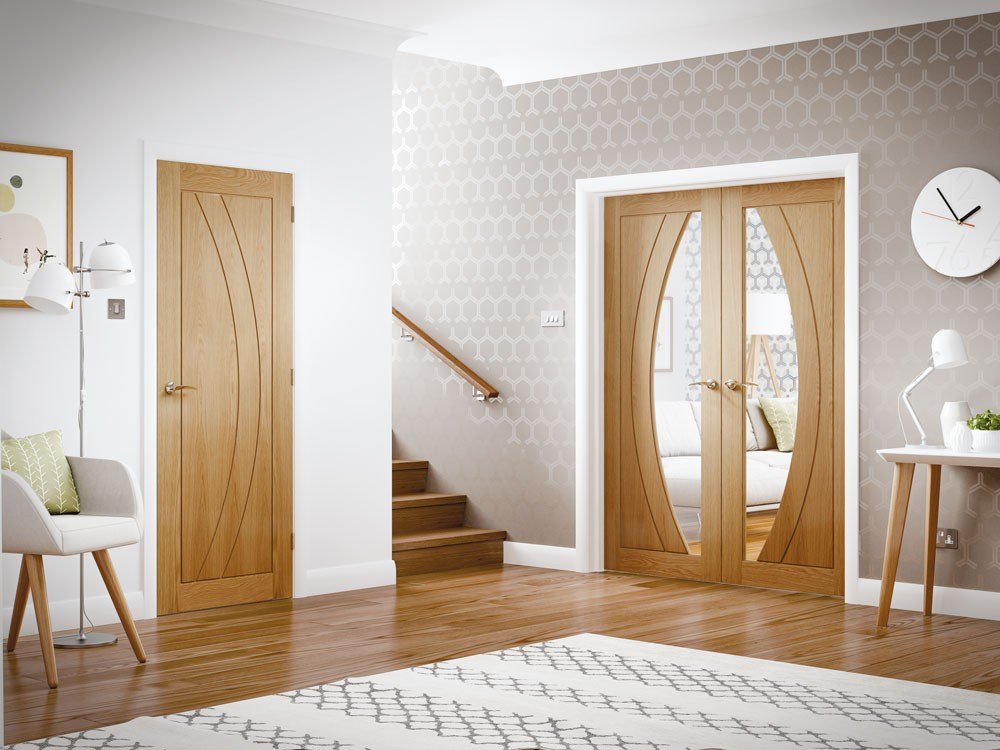When installing internal doors, it’s essential to take the right door size, as a poorly fitting door will look and feel wrong. The first step is to measure your space correctly and determine which type of door will fit. Here are a few tips on how to fit internal doors.
Step 1: Remove the old doors. You’ll need a screwdriver and a drill. First, remove the handles, then unscrew the hinges. The top hinge is usually screwed into the door frame and will be harder to remove than the bottom hinge attached to the door. You may need to use a hammer or chisel to break off any paint built up between the hinge and the door frame, but be careful not to damage the wood.
If your new door is more comprehensive than your old one, you may have to chisel away some of the surrounding wood so that they fit flush when you hang them.
Step 2: Measure door size. If you are replacing an old door, you will need to know the size. Take the height and width of the door frame. Door frames are usually smaller than doors, so make sure you measure at three points across the width and three points down the height to get an average opening size. These measurements need to be exact, as an incorrect measurement could result in a door not fitting correctly.
You will also need to know whether the door frame is square. You can tell this by measuring from corner to corner on each side of the frame. If these measurements are equal, your frame is square; if they vary, your frame is out of square.
Step 3: Measure door frame size. Measure the height and width of your existing door in millimetres, then add at least 5mm on all sides to allow for adjustments later. If you’re cutting down an existing door, make sure it’s at least 5mm wider than the opening at its widest point. This will give you the minimum size you’ll need for your new door (you can go up in size if preferred).
Step 4: Fitting the doors. The doors can now be fitted into their frames, adding an internal doorstop to the top and bottom of each frame.
If there is a lot of movement in the frame, use wedges between the frame and brickwork to stop it from flexing.
Use a packer on the hinge side of the door and fit two hinges. Screw the hinges using at least three screws per hinge.
Mark where the knobs will go on both sides and drill 5mm holes for the spindle to go through. If using handles with a backplate, drill 8-10mm holes.
For wooden doors, use a punch to mark out where the hinges need to be drilled. Use a tiny drill bit, and then fit your screws into these pilot holes before fitting the hinges.
Step 5: Fitting handles and locks.
Remove the latch and lock and drill pilot holes to countersink your screws. Fit the latch and lock to the desired position on the door. Mark the positions of the screw holes with a pencil.
Use a sharp chisel to carefully remove some wood from around the latch, making it slightly more profound than it is wide so that when you test-fit the latch, it will release smoothly
Drill pilot holes in the edge of the door for your screws, then fit hinges to either side of the door frame and screw them into place.
Mark out where you want your doorstop to be fitted – generally, this is a few millimetres from any wall or flooring. Fix your chosen handle onto your door.
Doors Delivered is the main supplier of internal doors in the UK. We offer nationwide services, and we have recently introduced installation carpentry as well. Feel free to browse the models in our range of oak doors, white doors, internal glazed doors, walnut doors, pine doors to find something suitable for your home renovation project.
FAQs
How hard is it to fit an internal door?
Installing a door may look like a difficult job. In reality, the job is straightforward and quite intuitive. Replacing an existing door is even easier if the new door is of the same size. Doing it in a new partition wall is not too difficult either, assuming you get a prehung door.
Can you install a new interior door without replacing the frame?
Yes, you can, but there are a few things to remember. Make sure the size is correct, and if you opt for a new door because of rubbing problems, try to identify the cause first. If the cause is in the frame, it may not be possible. If the previous door was defective and the frame is functional, you can just keep it.
Should there be a gap between door and frame?
Yes. The gap between the door and frame should be 1/16 of an inch. The gap between the door and the floor should be 5/16 of an inch. Wider gaps may cause problems.
